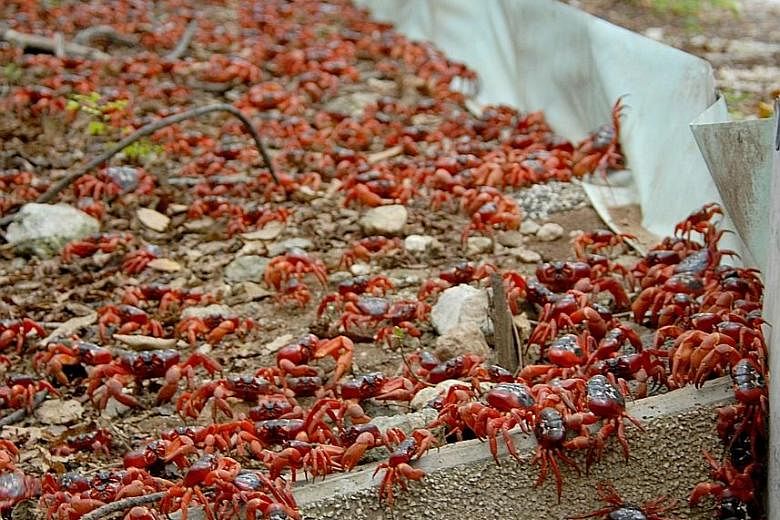There is more to crabs than those fried with black pepper or in a thick chilli sauce.
A new exhibition at the Lee Kong Chian Natural History Museum at the National University of Singapore (NUS) aims to let visitors know that the crustaceans can also play a vital role in their habitats.
Christmas Island Red, as the exhibition is called, spotlights the role of crabs on the rocky island that was part of Singapore until 1957, when it was sold to Australia. The official transfer took place in 1958.
The exhibition was launched yesterday by the museum, and attended by the Australian High Commissioner Bruce Gosper.
Christmas Island, which is about an hour by plane from Jakarta, is famed for the red crab, a species found only on the island.
The crustacean likely got its name from the striking red colour of its shell. But what has attracted the world's attention is the annual migration, when they move en masse from the forests to the sea to spawn.
There are more than 40 million of these palm-sized creatures on Christmas Island, which has a population of about 2,000. The migration, which usually takes place in December, turns the streets and roads a bright red. The phenomenon, captured by Google, which is working with Parks Australia, can be viewed on Google Maps Street View from early next year.
But museum visitors can watch it first at the exhibition, which will run for six months. They can also see different crab specimens and other types of fauna, including the red-pouched frigate birds. They will learn how a species of ants, the so-called yellow crazy ants, and feral cats that were brought to the island threatened its biodiversity, including the red crabs.
On Christmas Island, crabs are king, with the local people and authorities working hand in hand to protect them, such as building bridges and tunnels to facilitate their migration, and enacting laws to protect them.
But even in the forests, the crabs are the key drivers of the ecosystem, said Professor Peter Ng, head of the Lee Kong Chian Natural History Museum.
"There are no large mammals or predators on the island, so whichever gets there first dominates it. On Christmas Island, the red crab is king. It is not the fastest or strongest creature, but it is dominant. They feed on the vegetation in the forests, and act like gardeners of the forests, keeping them well manicured and with little undergrowth."
-
40m
Number of red crabs on Christmas Island.
2,000
Number of people on Christmas Island.
He added: "I hope visitors will realise that there is a wonderful place so close to Singapore. And Singaporeans may be obsessed with eating crabs, but I hope that through this exhibition, they will learn something more about them as well."
VIDEO
Watch to learn more about the crabs of Christmas Island. http://str.sg/o4LN


